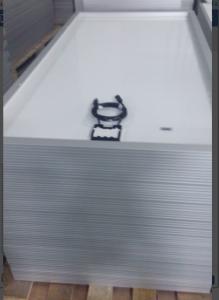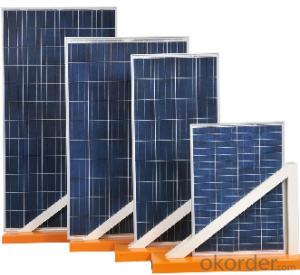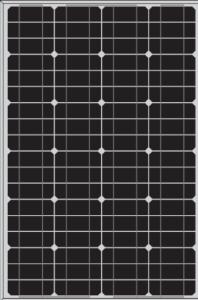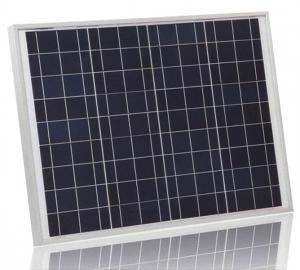CNBM Solar Monocrystalline 125mm Series (90W—100W) Solar Panels in The Winter
- Loading Port:
- China main port
- Payment Terms:
- TT OR LC
- Min Order Qty:
- 100000 watt
- Supply Capability:
- 10000000 watt/month
OKorder Service Pledge
OKorder Financial Service
You Might Also Like
About us
CNBM International Corp, established in 2004, is the business entity for trade and logistic of CNBM Group.With the advantages in Cement, Composite Materials, New Building Materials and Engineering, CNBM mainly concentrate on coal, steel and construction equipments and give priority to solar and wind energy development.CNBM International is highly recognized by its business partners and clients all over the world and has established good business relationship with the customers in over 120 countries and regions all over the world.
Process is as follows:
1, the battery test
2, positive Welding - Inspection –
3, on the back of cascading - Inspection –
4, laying (glass cleaning, material cutting, glass pre-processing, laying) –
5, laminating –
6, to flash ( to the side, cleaning) –
7, fitted border (glue, loading angle keys, punching, install box, scrub I glue) –
8, the welding junction box –
9, high-pressure test –
10, component testing -- -
11 appearance inspection, packaging and storage;

Data sheet
| Characteristics | |
| Max Power Voltage Vmp (V) | 17.4V-17.6-17.8 |
| Max Power Current Imp (A) | 5.33A-5.62A-5.79A |
| Open Circuit Voltage Voc (V) | 22.2V-22.3V-22.4V |
| Short Circuit Current Isc (A) | 5.17A-5.40A-5.62A |
| Max Power Pm (W) | 90W-95W-100W |
| Temperature Coefficient of Cells | |
| NOCT | 47℃±2℃ |
| Temperature Coefficients of Isc (%/℃) | 0.06% |
| Temperature Coefficients of Voc (%/℃) | -0.32% |
| Temperature Coefficients of Pmp (%/℃) | -0.45% |
| Mechanical Data | |
| Type of Cells (mm) | Mono125*125 |
| Dimension | 1190×550×30mm |
| Weight | 8kg |
| NO.of Cells and Connections | 4×9=36 |
| Limits | |
| Operating Temperature | –45°C to +80°C |
| Storage Temperature | –45°C to +80°C |
| Max System Voltage | 700V |
FAQ:
Q1: Why buy Materials & Equipment from OKorder.com?
A: All products offered byOKorder.com are carefully selected from China's most reliable manufacturing enterprises. Through its ISO certifications, OKorder.com adheres to the highest standards and a commitment to supply chain safety and customer satisfaction.
Q2: What is a solar PV module?
A: A solar PV module consists of many solar cells that are connected together (typically in series) and packaged in a frame (typically made of aluminum).
Q3: What are the advantages and disadvantages of monocrystalline solar PV modules?
A: Monocrystalline solar PV modules are the most efficient type of solar PV modules, with the exception of CdTe thin film solar PV modules. As a result, monocrystalline solar PV modules are more expensive when compared to almost all other types of solar PV modules.
Q4: What is the typical service life of a solar PV module?
A: The typical life of a PV module is 25 years. However, superior quality PV modules boast service lives up to 35-40 years (electrical generating capacity is often reduced, however by that point).
- Q: Can solar panels be installed on a boat?
- Yes, solar panels can be installed on a boat. In fact, it is a popular and efficient way to generate electricity for various onboard systems, such as lighting, navigation, and charging batteries. Solar panels are lightweight, durable, and can be easily mounted on the deck or roof of a boat to harness solar energy and contribute to a more sustainable boating experience.
- Q: Why can't they put solar-panels on the blades and sides of the 300-500 foot tall turbines? Wouldn't this increase effeciency? Therefore, boosting pay-back time, profits, energy-output?
- It would work better to put the solar panels on the ground beneath the windmills. Land underneath wind farms is perfectly usable for other things, and it gets plenty of sun. But then, if you think about good places for solar panels, parking lots make even more sense yet. There's plenty of em, and people like to park in the shade.
- Q: The average solar panel produces 0% of the energy that is put into it. What is happening to the other 90%? Is it being reflected or is it being obsorbed by materials that are not a part of the solar cell? Is it possible to one day have near 00% efficient solar cell technology?
- Unlikely that we gan get to near 00% efficiency, although there is room for improvement. In the meantime, don't pooh-pooh 0% efficiency. That's about the rate of energy transfer up a food pyramid, perhaps a little less at the solar to plant level. As this manages to provide the basis for most of life on earth, it's nothing to sneeze at. As far as the other 90% goes, I would guess that much of it is reflected.
- Q: Can solar panels be installed on a parking lot or carport?
- Yes, solar panels can be installed on a parking lot or carport. In fact, this is a growing trend known as solar carports or solar parking lot canopies. These structures not only provide shade for vehicles but also generate clean and renewable energy. They are a great way to utilize unused space for solar power generation while providing additional benefits such as reducing heat island effect and offering covered parking.
- Q: I'm a student trying to design a mounting structure for solar panels. I'm reading about passive trackers so as to track the sun for optimal energy production; but I am not fully quot;seeinghow it works. Can someone please help explain it to me, or at least send me a link(s) that could help explain it well?THANKS IN ADVANCED!! [and HAPPY HALLOWEEN!!]
- It appears to be relying upon a phase change of liquid to gas to liquid to balance the system and return it to the east in the morning.
- Q: Are solar panels worth the investment?
- Yes, solar panels are worth the investment. They offer long-term financial savings by reducing electricity bills and the potential for selling excess energy back to the grid. Additionally, they contribute to a cleaner and more sustainable future by reducing carbon emissions and dependency on fossil fuels.
- Q: Can solar panels be used on agricultural land?
- Yes, solar panels can be used on agricultural land. In fact, solar energy systems can be a great way to utilize otherwise unused or unproductive land, providing farmers with an additional source of income while producing clean and renewable energy.
- Q: Can solar panels be installed on a gas station or convenience store?
- Yes, solar panels can be installed on a gas station or convenience store. In fact, many gas stations and convenience stores have successfully integrated solar panels into their infrastructure to generate renewable energy and reduce their reliance on traditional energy sources.
- Q: Is it as simple as buying the panels, an inverter and plugging it into a wall-socket, assuming it would just send power back into the outlet and supplement my house's electrical usage, or... Is it not that simple?Remember, I'm talking about a SMALL system, and I don't care how little power it'd make, or how uneconomical it would be.
- How to tie small solar panel system into my house's electircal system? It's very complicated. Just for starters, if you plugged your solar panel into your electrical outlet, you would probably see smoke and fire, not electricity. Of course anything CAN be done. But this one is truly unfeasible at the consumer level. The only way to send power back into a live system is to synchronize the phase voltages. In your case you would require the solar panels, a battery backup system, a voltage inverter and some type of industrial synchronizer (probably a generator) so you could sync your inverter output to the utilities output. Solar is still more of a standby or supplemental type power at this time. The easiest way is to supplement your hot water by using solar panels to heat water rather than create electricity. If money was not much of an option then you could theoretically run your whole house without the need for any synchronization but have a gasoline or diesel generator to keep your battery pack topped up when needed.
- Q: What is the most powerful solar panel made?
- There are various solar farms that run turbine generators that have some rather large arrays. I suspect they'd be in the southwest but i've seen pictures of them covering a few acres. You won't find very large panels because its best to keep the panels small and just have a lot of them. This is because its much easier to have a thousand 0m^3 panels then huge 0000m^3 panel because you achieve best performance when you can align the solar panels to always face the sun. With a huge panel, you would need it to be high off the ground so it can manuver around. Small ones can all be menuvered on a small scale only a few feet off the ground so they can all be pointing towards the sun to gather the most light.
Send your message to us
CNBM Solar Monocrystalline 125mm Series (90W—100W) Solar Panels in The Winter
- Loading Port:
- China main port
- Payment Terms:
- TT OR LC
- Min Order Qty:
- 100000 watt
- Supply Capability:
- 10000000 watt/month
OKorder Service Pledge
OKorder Financial Service
Similar products
Hot products
Hot Searches
Related keywords




























